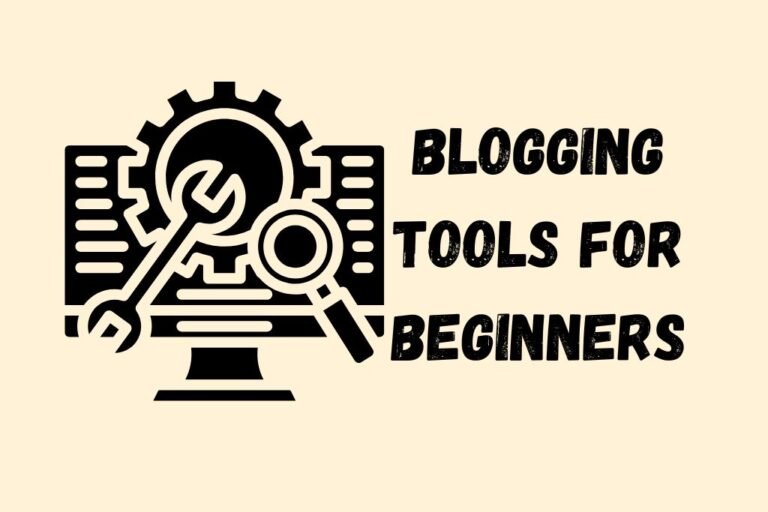How to write a good blog post for beginners
In the crowded world of blogging, creating content that stands out and captivates readers is no small feat. With millions of blog posts published daily, how do you ensure yours doesn’t get lost in the noise? The answer lies in crafting posts that are not only informative but also engaging, relatable, and actionable. This guide will walk you through proven strategies to write blog posts that people want to read, share, and return to.

1. Understand Your Audience
Before typing a single word, you must know who you’re writing for. A deep understanding of your audience ensures your content resonates with their needs, interests, and pain points.
Steps to Define Your Audience:
- Create Reader Personas:
- Demographics: Age, gender, location, occupation.
- Psychographics: Goals, challenges, values, hobbies.
- Example: A persona for a fitness blog might be “Sarah, 28, a busy mom looking for quick home workouts.”
- Analyze Existing Data:
- Use Google Analytics to identify popular topics and reader behavior.
- Survey your audience via email or social media to ask what they want to learn.
- Join Online Communities:
- Participate in forums (Reddit, Quora), Facebook Groups, or niche-specific platforms to observe discussions.
Why It Matters: Writing generic content for “everyone” often appeals to no one. Tailor your posts to solve specific problems or answer burning questions.
2. Choose Topics That Matter
Even the most polished writing won’t attract readers if the topic isn’t relevant. Focus on ideas that align with both your audience’s interests and your blog’s niche.
How to Find Winning Topics:
- Keyword Research:
- Use tools like Ahrefs, SEMrush, or Ubersuggest to identify high-search, low-competition keywords.
- Example: “How to start a podcast with no audience” instead of “podcast tips.”
- Trending Content:
- Explore platforms like BuzzSumo or Google Trends to spot viral topics in your niche.
- Repurpose Evergreen Content:
- Update old posts with fresh data or expand on subtopics (e.g., “10 Budget Travel Hacks” → “25 Budget Travel Hacks for 2024”).
- Leverage “Skyscraper” Technique:
- Find top-performing posts in your niche and create a better, more comprehensive version.
3. Craft Irresistible Headlines
Your headline is the first (and often only) chance to grab attention. On average, 8 out of 10 people will read a headline, but only 2 will click through to the article.
Headline Formulas That Work:
- Problem-Solution:
- “Struggling to Sleep? 7 Science-Backed Remedies to Try Tonight”
- List Posts:
- “17 Email Marketing Tools That Save Time and Boost Sales”
- How-To Guides:
- “How to Grow Tomatoes in Small Spaces: A Step-by-Step Guide”
- Curiosity-Driven:
- “The Secret Strategy That Doubled My Blog Traffic in 30 Days”
- Mistake-Focused:
- “5 Common Resume Mistakes That Are Costing You Job Interviews”
Pro Tips:
- Use power words like proven, ultimate, essential, or free.
- Keep headlines under 60 characters to avoid truncation in search results.
- Test headlines with tools like CoSchedule’s Headline Analyzer.
4. Hook Readers with a Strong Introduction
If your headline grabs attention, your introduction must keep it. A weak opening will cause readers to bounce before reaching the meat of your post.
Effective Introduction Techniques:
- Ask a Question:
- “Have you ever spent hours writing a blog post, only to see zero engagement?”
- State a Problem:
- “Low website traffic is frustrating, especially when you’re putting in the work.”
- Share a Statistic:
- “73% of readers skim blog posts—here’s how to make yours stick.”
- Tell a Story:
- “Two years ago, I published my first blog post to crickets. Here’s what I learned.”
- Promise a Benefit:
- “By the end of this post, you’ll know exactly how to write headlines that convert.”
Avoid:
- Lengthy intros that don’t get to the point.
- Jargon or overly formal language.
5. Structure Your Post for Readability
Online readers scan content. If your post is a wall of text, they’ll leave. Use formatting to make your post skimmable and digestible.
Formatting Best Practices:
- Short Paragraphs: Keep paragraphs to 2–3 lines.
- Subheadings (H2/H3): Break content into sections with clear, descriptive titles.
- Bullet Points and Numbered Lists: Highlight key takeaways or steps.
- Bold and Italics: Emphasize important phrases (but don’t overdo it).
- White Space: Avoid clutter by using margins and line breaks.
- Visuals: Add images, infographics, or videos to reinforce points.
Example of Scannable Structure:
- Introduction → 2. Problem → 3. Solution Steps → 4. Tips → 5. Conclusion
6. Write in a Conversational Tone
Formal, academic writing can alienate readers. Aim for a friendly, approachable voice that feels like a one-on-one conversation.
Tips for Conversational Writing:
- Use contractions (“you’re” instead of “you are”).
- Address the reader as “you.”
- Avoid passive voice (“The report was written by me” → “I wrote the report”).
- Inject personality: Humor, anecdotes, or relatable struggles.
Bad Example:
“It is imperative that individuals utilize time-management strategies to optimize productivity.”
Good Example:
“Let’s face it—time management can be a nightmare. Here’s how I stopped drowning in to-do lists.”
7. Deliver Value with Actionable Content
Readers want takeaways they can apply immediately. Avoid vague advice and focus on practical steps.
How to Make Your Content Actionable:
- Step-by-Step Guides: “Step 1: Set Up Your Camera → Step 2: Adjust Lighting…”
- Templates and Checklists: Offer downloadable PDFs.
- Case Studies: Show real-world examples of strategies in action.
- Data-Driven Insights: Cite studies or surveys to back your claims.
Example: Instead of saying “Invest in SEO,” explain:
“Install the Yoast SEO plugin, target long-tail keywords like ‘best running shoes for flat feet,’ and optimize meta descriptions.”
8. Optimize for SEO (Without Sacrificing Quality)
SEO helps your content rank on search engines, but keyword stuffing ruins readability. Strike a balance.
SEO Best Practices:
- Keyword Placement: Include your primary keyword in the title, first 100 words, and 2–3 subheadings.
- Internal Linking: Link to related posts on your blog (e.g., “Learn how to choose a niche here”).
- External Links: Reference authoritative sources (e.g., Harvard studies, industry reports).
- Alt Text for Images: Describe images with keywords (e.g., “organic-skincare-routine”).
- Mobile Optimization: Ensure your site loads quickly and looks good on phones.
Tools to Help:
- Yoast SEO (WordPress) for on-page optimization.
- Grammarly for readability checks.
9. Engage Readers with Stories and Examples
Stories humanize your content and make abstract concepts relatable.
Ways to Incorporate Storytelling:
- Personal Anecdotes: “When I first tried meditation, I hated it—until I discovered this trick.”
- Customer Success Stories: “How Jane Paid Off $30K Debt Using Our Budget Template.”
- Metaphors: “Think of SEO as a marathon, not a sprint.”
Pro Tip: Use the “Hero’s Journey” framework:
- Challenge → 2. Struggle → 3. Solution → 4. Victory
10. Edit Ruthlessly
Great writing is rewriting. Editing transforms a rough draft into a polished piece.
Editing Checklist:
- Cut Fluff: Remove redundant phrases (e.g., “in order to” → “to”).
- Simplify Language: Replace complex words with simpler ones (“utilize” → “use”).
- Check Flow: Ensure each paragraph transitions smoothly to the next.
- Fix Grammar and Typos: Use tools like Hemingway Editor or ProWritingAid.
- Read Aloud: Catch awkward phrasing or run-on sentences.
Example of Tight Editing:
Before: “At this point in time, it is essential to commence the process of implementing changes.”
After: “Start making changes now.”
11. Encourage Interaction
Engagement boosts your post’s visibility and builds community.
Ways to Foster Interaction:
- End with a Question: “What’s your biggest blogging challenge? Let me know below!”
- Add a Call-to-Action (CTA): “Download our free eBook” or “Share this post with a friend.”
- Enable Comments: Respond to readers to spark conversations.
- Include Social Sharing Buttons: Make it easy for readers to share your content.
12. Promote Your Content
Even the best post won’t succeed if no one sees it. Promote relentlessly.
Promotion Strategies:
- Social Media: Share snippets on Twitter, LinkedIn, Pinterest, or TikTok.
- Email Newsletters: Send new posts to your subscriber list.
- Guest Posting: Write for larger blogs in your niche with a link back to your site.
- Repurpose Content: Turn blog posts into YouTube videos, podcasts, or infographics.
13. Update Old Posts
Evergreen content can drive traffic for years—if you keep it updated.
How to Refresh Old Content:
- Add new statistics or examples.
- Improve SEO by targeting fresh keywords.
- Fix broken links or outdated advice.
- Republish with a note: “Updated for 2024.”
14. Analyze and Improve
Track performance to refine your strategy.
Metrics to Monitor:
- Page Views: Are posts attracting traffic?
- Bounce Rate: Are readers leaving quickly?
- Average Time on Page: Is your content engaging enough?
- Social Shares: Which topics resonate most?
Tools: Google Analytics, Hotjar (heatmaps), or MonsterInsights.
15. Learn from the Pros
Study successful blogs in your niche. Note their structure, tone, and content angles.
Blogs to Inspire You:
- HubSpot: Masterful mix of education and CTAs.
- Nerd Fitness: Relatable storytelling + actionable advice.
- Backlinko: Data-driven SEO guides with clear visuals.
Conclusion
Writing blog posts that people actually read requires equal parts strategy, empathy, and creativity. By understanding your audience, choosing compelling topics, and delivering value in a scannable format, you’ll create content that not only ranks but also builds trust and loyalty. Remember, consistency is key—keep refining your approach based on feedback and data, and your blog will grow into a go-to resource in your niche.
Now, it’s time to put these tips into action. Start drafting your next post with confidence, and watch your readership soar!






